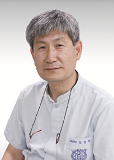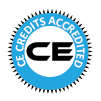
Byeong-Hoon
Institute of Seoul National University,Korea
Title: Effect of pulsed-power plasma on the adhesion of resin composite to dentin.
Biography
Biography: Byeong-Hoon
Abstract
This study investigated the effect of a pulsed-power plasma on the adhesion of resin composite to dentin and its durability. A pencil type helium plasma jet was used with pulsed power of 1.2 W at 400 Hz. Dentin adhesion and its durability were compared using a microtensile bond strength (MTBS) test before and after 10,000 cycles of thermocycling (TC), according to the following surface treatments after etching and rinsing: air dry with no plasma (AD); pulsed plasma dry with a pulsed power of 1.2 W (PP); re-wetted after pulsed plasma dry (RW); with wet-bonding (WB). Then, Single Bond 2 and Z-250 resin composite (3M ESPE) were applied according to the manufacturer's instructions. Data were analyzed with repeated-measures ANOVA and post hoc Scheffe test (ï¡ = 0.05). The MTBS of AD, PP, RW and WB groups at 24 h were 28.9 (9.5)ab, 61.2 (14.3)d, 58.6 (14.6)cd and 52.2 (16.8)cd, respectively. They were 16.3 (5.8)a, 44.9 (14.3)bc, 57.3 (18.4)cd and 66.9 (13.6)d after TC, respectively. Within the limitation of this study using a total-etch 2-step adhesive, when the dentin surface was dried with pulsed plasma spray after etching and rinsing, the MTBS was similar to that obtained with wet bonding technique. After TC, although the MTBS obtained with pulsed plasma dry decreased significantly, that obtained with rewetting did not decrease. Although pulsed plasma treatment using low applied energy improved the dentin adhesion, the plasma treated surface need to be rewetted for durability.

